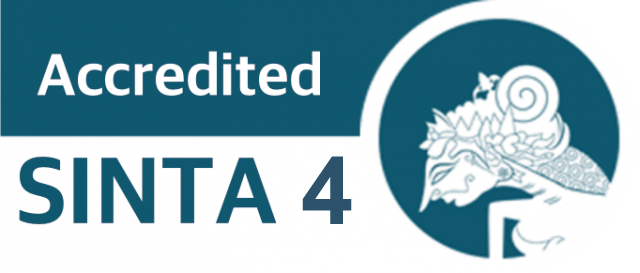Development of the Science Knowledge Application on Temperature, Heat, and Expansion to Improve Student Learning Outcomes
DOI:
10.29303/jpm.v20i6.9882Published:
2025-10-02Issue:
Vol. 20 No. 6 (2025)Keywords:
Learning Media; Learning Outcomes; Smart Apps Creator; Sains Knowledge; 4D ModelArticles
Downloads
How to Cite
Downloads
Metrics
Abstract
Sains Knowledge is an application developed to support student learning. This study aims to examine the validity, practicality, and effectiveness of the Sains Knowledge application in improving student learning outcomes on the topics of temperature, heat, and expansion. The research employed a One-Group pretest–posttest design, with data analyzed using the N-gain test. The study was conducted with seventh-grade students (Class VII-A) at SMP Negeri 11, Gorontalo City, and employed a Research and Development (R&D) approach based on the 4D model, comprising the stages of define, design, development, and dissemination. The findings show that Sains Knowledge met the eligibility criteria as a learning medium, with an average validation score of 94%. The practicality instruments indicated a 92% implementation rate, while student responses fell into the “very good” category at 80% and the “good” category at 20%. In terms of effectiveness, student activity reached 86%, and learning outcomes improved from an average score of 48 (pretest) to 90 (posttest), with an average N-gain of 0.81 in the “high” category. These results demonstrate that the Sains Knowledge application is valid, practical, and effective in enhancing student learning outcomes, with broader implications for improving digital learning media in secondary education.
References
F. Firmadani, “Media Pembelajaran Berbasis Teknologi Sebagai Inovasi Pembelajaran Era Revolusi Industri 4.0,” Pros. Konf. Pendidik. Nas., vol. 2, no. 1, pp. 93–97, 2020.
M. Syafril, R. Yogica, R. Fitri, and G. H. Selaras, “JOTE Volume 4 Nomor 4 Tahun 2023 Halaman 242-246 JOURNAL ON TEACHER EDUCATION Research & Learning in Faculty of Education Analisis Kebutuhan Media Pembelajaran E-Modul Berbasis Discovery Learning,” vol. 4, pp. 242–246, 2023.
I. Naffi’an, A. Handayani, and D. Rakhmawati, “PENTINGNYA MEDIA PEMBELAJARAN UNTUK MENINGKATKAN MINAT BELAJAR SISWA,” 2024.
A. Maydiantoro, “Model Penelitian Pengembangan,” Chem. Educ. Rev., vol. 3, no. 2, p. 185, 2020.
B. Sihombing, “Model Pengembangan 4D ( Define , Design , Develop , dan Disseminate ) dalam Pembelajaran Pendidikan Islam,” vol. 4, pp. 11–19, 2024.
M. Waruwu, “Metode Penelitian dan Pengembangan (R&D): Konsep, Jenis, Tahapan dan Kelebihan,” J. Ilm. Profesi Pendidik., vol. 9, no. 2, pp. 1220–1230, 2024.
O. Suhartati, “Flipped Classroom Learning Based on Android Smart Apps Creator (SAC) in Elementary Schools,” J. Phys. Conf. Ser., vol. 1823, no. 1, 2021.
J. Ali, A. Annisa, A. Wasid, K. Rahmadani, A. Fricticarani, and P. Dayurni, “Pengembangan Media Pembelajaran Berbasis Android Menggunakan Aplikasi Smart App Creator 3 Pada Mata Pelajaran Teknologi Informasi Dan Komunikasi,” J. Inov. Pendidik. dan Teknol. Inf., vol. 5, no. 1, pp. 144–150, 2024.
J. Adam, R. Yunginger, R. Uloli, D. D. Paramata, T. Abdjul, and N. E. Ntobuo, “Pengembangan Media Berbasis Smartphone Menggunakan Smart Apps Creator Untuk Mendukung Pembelajaran Daring Pada Materi Fluida Statis Di Sma Negeri 1 Telaga,” J. Pendidik. Fis., vol. Vol, 13, no. 2, p. 306, 2023.
A. W. Alsyabri, “Wira, Alsyabri Validitas dan Efektivitas Media Pembelajaran Berbasis Android Mata Pelajaran Komputer dan Jaringan Dasar,” J. Educ. Inform. Technol. Sci., vol. 3, no. 1, pp. 1–10, 2021.
A. R. Annisa, A. P. Putra, and Dharmono, “Kepraktisan Media Pembelajaran Daya Antibakteri Ekstrak Buah Sawo Berbasis Macromedia Flash Practicality Of Learning Media for Antibacterial Power of Sapodilla Fruit Extract Based Macromedia Flash,” Inov. Pendidik. Sains, vol. 11, no. 1, pp. 72–80, 2020.
D. Aprianti, S. Pomalingo, and R. P. Ismail, “Pengembangan Media Album Budaya Nusantara Pada Materi Keberagaman Budaya Sdn 6 Wonosari, Gorontalo,” SINERGI J. Ris. Ilm., vol. 2, no. 3, pp. 1375–1387, 2025.
R. Reniesa, P. Rianti, P. Karyanto, and D. Wahyuningsih, “Pengembangan Media Pembelajaran Daring Berbasis Aplikasi Smart Apps Creator (Sac) Untuk Meningkatkan Hasil Belajar Kognitif Siswa,” INKUIRI J. Pendidik. IPA, vol. 11, no. 2, pp. 103–110, 2022.
Yogi Fernando, Popi Andriani, and Hidayani Syam, “Pentingnya Motivasi Belajar Dalam Meningkatkan Hasil Belajar Siswa,” ALFIHRIS J. Inspirasi Pendidik., vol. 2, no. 3, pp. 61–68, 2024.
R. Ratnah, W. Wildan, and M. Muntari, “The practicality of problem-based learning tools assisted by interactive simulations to improve students' creative thinking ability,” Jurnal Pijar MIPA, vol. 17, no. 3, pp. 347–352, 2022, doi: 10.29303/jpm.v17i3.3441
E. A. Rahma and D. Novita, “Development of Electronic Student Worksheet Inquiry-Based with Multiple Representations of Chemistry on Reaction Rate Material to Practice Students Critical Thinking Skills,” Jurnal Pijar MIPA, vol. 19, no. 3, pp. 423–428, 2024, doi: 10.29303/jpm.v19i3.6628
R. Ulum, L. Nulhakim, and A. Nestiadi, “Development of interactive learning media assisted by Padlets on the theme of environmental change to foster student creative thinking skills,” Jurnal Pijar MIPA, vol. 18, no. 3, pp. 398–403, 2023, doi: 10.29303/jpm.v18i3.4836
C. A. Citra and B. Rosy, “Keefektifan Penggunaan Media Pembelajaran Berbasis Game Edukasi Quizizz Terhadap Hasil Belajar Teknologi Perkantoran Siswa Kelas X SMK Ketintang Surabaya,” J. Pendidik. Adm. Perkantoran, vol. 8, no. 2, pp. 261–272, 2020.
M. C. Putri and M. Martini, “The implementation of a guided inquiry model assisted by visual media to improve students learning outcomes on digestive system learning materials,” Jurnal Pijar MIPA, vol. 17, no. 4, pp. 442–446, 2022, doi: 10.29303/jpm.v17i4.3597
A. Shofawati, W. Widodo, and D. A. P. Sari, “The use of multimedia interactive to improve students science literacy in the new normal era,” Jurnal Pijar MIPA, vol. 18, no. 1, pp. 65–71, 2023, doi: 10.29303/jpm.v18i1.3832
Author Biographies
Chindy Dahlia Mokoginta, Department of Science Education, Universitas Negeri Gorontalo
Mursalin Mursalin, Department of Science Education, Universitas Negeri Gorontalo
Citron S. Payu, Department of Science Education, Universitas Negeri Gorontalo
Tirtawaty Abdjul, Department of Science Education, Universitas Negeri Gorontalo
Nova Elysia Ntobuo, Department of Science Education, Universitas Negeri Gorontalo
Ritin Uloli, Department of Science Education, Universitas Negeri Gorontalo
License
Copyright (c) 2025 Chindy Dahlia Mokoginta, Mursalin Mursalin, Citron S. Payu, Tirtawaty Abdjul, Nova Elysia Ntobou, Ritin Uloli

This work is licensed under a Creative Commons Attribution 4.0 International License.
The following terms apply to authors who publish in this journal:
1. Authors retain copyright and grant the journal first publication rights, with the work simultaneously licensed under a Creative Commons Attribution License 4.0 International License (CC-BY License) that allows others to share the work with an acknowledgment of the work's authorship and first publication in this journal.
2. Authors may enter into separate, additional contractual arrangements for the non-exclusive distribution of the journal's published version of the work (e.g., posting it to an institutional repository or publishing it in a book), acknowledging its initial publication in this journal.
3. Before and during the submission process, authors are permitted and encouraged to post their work online (e.g., in institutional repositories or on their website), as this can lead to productive exchanges as well as earlier and greater citation of published work (See The Effect of Open Access).











